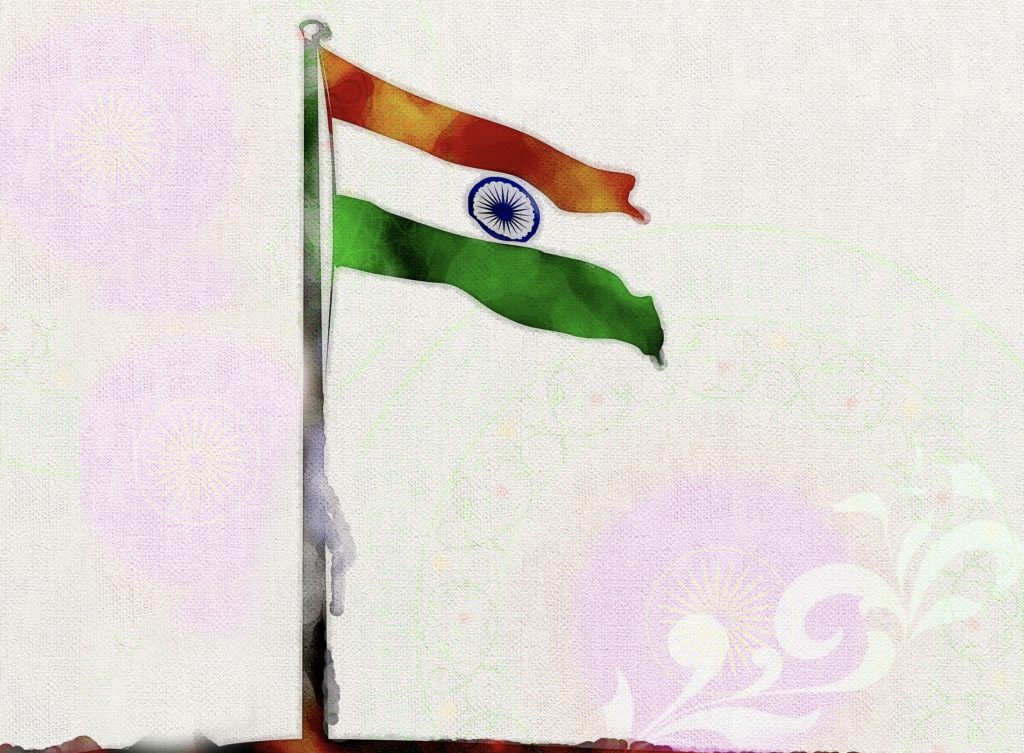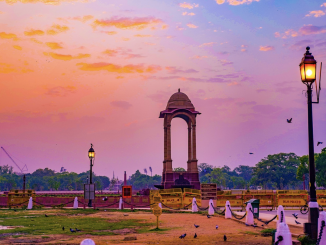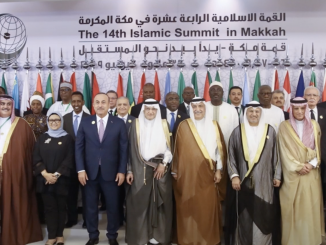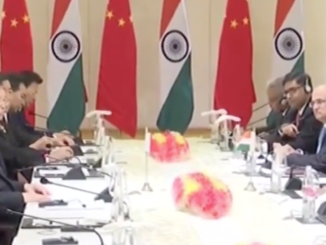
India has once again embroiled itself in a border skirmish with one of its neighbours that has resulted in a serious embarrassment for its military. Its ‘over sold’ narrative of a rising power willing to confront and contain China’s rise has proven to be misleading, as India’s political and military leadership struggles to explain why India continues to face ‘strategic paralysis’ in times of crisis, despite the claims by its military of preparing for a ‘two-front war.’ The growing frequency of regional crises indicate that India is emerging into a restless revisionist state with misguided global ambitions, which if remained unchecked could have serious implications for regional as well as international security environment.
A Restless Neighbour. India seems to be in a perpetual state of crises with most of its neighbours. The recent China-India crisis along the Line of Actual Control (LAC) – a disputed borderline dividing the territory between the two – is the fifth military confrontation over the past seven years. India also continues to remain embroiled in periodic clashes along the Line of Control (LoC) with Pakistan, some of which led to serious military escalation and had the a potential for an all-out war.
In 2016, India declared that it had launched a land-based ‘surgical strike’ inside Pakistan-administered Kashmir – a claim that was refuted by Pakistan but exploited by the Indian political leadership for their domestic-politics gains and to signal that India will not hesitate to take ‘punitive’ measures against its neighbours. Emboldened by the lack of response from the Pakistani side and international criticism for its rogue behaviour, India launched an aerial surgical strike in 2019, inside mainland Pakistan, which was responded with a matching counterstrike by Pakistan resulting into shooting down two of the Indian Air Force (IAF) aircraft and the capture of one of the IAF pilot.
India’s other smaller neighbours are also not at peace due to unresolved border disputes. Nepal has recently issued a new map reclaiming part of its territory that it claims has been occupied by India. After a recent skirmish along the border, the tensions between the two neighbours have risen. Bhutan, which is a much smaller country has to bear with frequent incursions by the Indian military against alleged insurgents that India claims operate from Bhutan’s territory.
In Aug 2019, the current BJP government attempted to unilaterally alter the special status of disputed territories of Jammu & Kashmir (J&K) and Ladakh by abrogating Articles 370 and 35A and declaring these as India’s Union territories. Both Pakistan and China rejected India’s decision which was also a violation of the UN Security Council resolutions. India nevertheless, continued to make administrative changes and develop road infrastructure in the disputed region of Ladakh, which eventually became one of the reasons for the recent ‘face-off’ between the Indian and Chinese troops.
Misguided Ambitions. India’s ambition to emerge as a global power predates the nuclearization of South Asia. In fact, the acquisition of nuclear weapons was one of the means to achieve this end objective. The demise of the former Soviet Union provided India a much-wanted opportunity to assert its leadership credentials and project itself as a credible rival to China. This nevertheless required building India’s image of a ‘responsible’ nuclear power and significant modernization of its military.
The Next Steps in Strategic Partnership (NSSP) agreed between the US and India in Jan 2004 laid the foundation for future collaboration. The US used its influence to change global nonproliferation norms and craft India-specific exemptions from the export control regimes that could permit India to access sensitive dual-use technologies and help build its conventional and nuclear military capabilities.
The US and several other western allies also propped India for permanent membership of the UN Security Council to raise India’s standing. India is part of the US-led Indo-Pacific strategy and the four-nation ‘Quad’ (US, Japan, Australia, and India), which helps India to project itself an equal partner in the US-led China containment strategy.
The engineered perception that India is a rising global power may have led to unrealistic expectations and given India a false sense of entitlement and superiority. The rise of ‘Hindutva’ in India’s polity under the current BJP led government; its abhorrence towards a rule-based international system; and coercive military behaviour against almost all of its immediate neighbours – are an outcome of India’s unbridled global ambitions. India faces serious structural deficiencies and if it continues to pursue its misguided ambitions, it may lead to further embarrassment.
The Myth of a ‘Two-Front War’. India’s response to the recent LAC crisis against China is in stark contrast with how it reacted during the 2019 Balakot crisis with Pakistan. PM Modi threatened nuclear retribution, if Pakistan did not return the captured Indian Air Force (IAF) pilot; whereas, in the case of China, India’s leadership remained pusillanimous even after losing 20 soldiers and 60 sq km of territory, and another 10 soldiers taken prisoners by the Chinese side. PM Modi, who had crafted his image of India’s strong man, instead of promising a military response, stated: “[N]either has anyone intruded our border, nor is anyone currently intruding, nor is any Indian post in the hands of anyone else.”
This embarrassing denial and the lack of resolve demonstrated by India’s political leadership is reflective of India’s inherent vulnerabilities. India’s military leadership that has been boasting of fighting a ‘two-front war’ against China and Pakistan has proven to be incapable of dealing with its adversaries, even individually.
During the last India-China war of 1962, India was decisively defeated despite major military assistance provided by the US after PM Nehru made desperate pleas by writing two letters in a day to President Kennedy. After 58 years of war preparedness and with an annual defence spending of over $70 billion, India is not much different in terms of military potential and remains dependent on the external assistance.
The recent crisis could be used by India to move further closer to the US, even though India is already a strategic partner with unprecedented access to US military hardware. Joining a formal defence pact to safeguard its territorial integrity seems unlikely and may trigger a race for regional military alliances led by China, which eventually could prove to be counter-productive; and India, instead of containing China, may eventually find itself more contained.
Will India be Able to Restore Its Credibility? The (mis)perception that India could credibly challenge China’s rise needs a serious review by India’s strategic partners after the recent military stand-off with China. India has also earned a unique honour of being the only nuclear power militarily humiliated by two different and asymmetric nuclear adversaries (Pakistan and China) in a short span of 18 months. The recent face-off may have helped establish China’s military prowess in the region, and it has also emerged as a country willing to take political risks to defend its legitimate interests without any support from the outside.
The outcome of the India-China crisis may also have some useful lessons for India’s relatively smaller neighbours, especially Pakistan which has to deal with India’s coercive behaviour quite often. In a future crisis, Pakistan can contemplate disproportionate punitive measures against Indian aggression, since the latter has proven to be incapable of bearing the consequences of a rapid vertical escalation due to a visible disconnect between India’s political rhetoric and its military potential. Finally, India’s other smaller neighbours may feel more confident in confronting India’s military coercion by opting to align themselves with China or by standing up on their own against the regional bully.
![]()




Dr Adil a very realistic article of the capabilities and vulnerabilities of India. One can only pray that India will draw some lessons for herself and lead more peaceful relations with her neighbors.
Thank you for your comment Sir
A well structured article. The punch line remains, “After 58 years of war preparedness and with an annual defence spending of over $70 billion, India is not much different in terms of military potential and remains dependent on the external assistance”. The important takeaway is “In a future crisis, Pakistan can contemplate disproportionate punitive measures against Indian aggression, since the latter has proven to be incapable of bearing the consequences of a rapid vertical escalation due to a visible disconnect between India’s political rhetoric and its military potential.”
A very balanced analysis.
Thanks Sir
Your analysis is completely driven by your hatred against India. No wonder Pakistan is living on aid from international institutions and other countries because if it is producing intellectuals like you then it is doomed to live on aid.